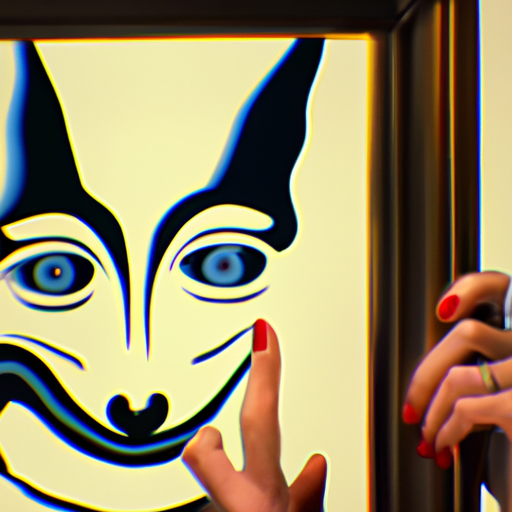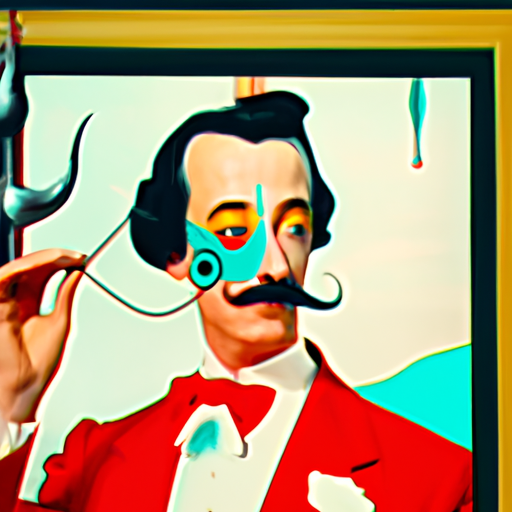
-
Table of Contents
Salvador Dali’s Surrealism and Its Graphic Design Applications

Salvador Dali, a prominent Spanish artist, is widely known for his contributions to the Surrealist movement. His unique and imaginative style has not only left a lasting impact on the art world but has also influenced various other creative fields, including graphic design. In this article, we will explore the key elements of Dali’s surrealism and how they can be applied in graphic design.
The Essence of Dali’s Surrealism
Dali’s surrealism is characterized by dreamlike imagery, unexpected juxtapositions, and a sense of the irrational. His works often feature melting clocks, distorted figures, and bizarre landscapes, creating a sense of unease and fascination. Dali aimed to tap into the unconscious mind, exploring the depths of human psychology and challenging conventional reality.
One of the most famous examples of Dali’s surrealism is his painting “The Persistence of Memory.” This iconic artwork depicts melting clocks draped over various objects in a barren landscape. The image evokes a sense of timelessness and the fluidity of reality, inviting viewers to question their perception of the world.
Applying Dali’s Surrealism in Graphic Design
Dali’s surrealistic approach can be effectively applied in graphic design to create visually striking and thought-provoking designs. By incorporating elements of surrealism, designers can push the boundaries of traditional design and evoke emotions in their audience. Here are some key ways in which Dali’s surrealism can be applied in graphic design:
1. Unexpected Juxtapositions
Incorporating unexpected juxtapositions is a hallmark of Dali’s surrealism. In graphic design, this can be achieved by combining unrelated objects or concepts to create a sense of surprise and intrigue. For example, a designer could juxtapose a vintage typewriter with a futuristic spaceship to create a visually captivating poster for a science fiction event.
2. Distorted Reality
Dali often distorted reality in his artworks, creating a sense of unease and disorientation. Graphic designers can employ similar techniques by distorting images or typography to challenge the viewer’s perception. This can be particularly effective in advertising campaigns or album covers, where the goal is to grab attention and leave a lasting impression.
3. Symbolism and Metaphors
Dali’s surrealism often incorporated symbolic elements and metaphors to convey deeper meanings. Graphic designers can use symbolism and metaphors to communicate complex ideas or evoke specific emotions. For example, a designer could use a broken mirror to symbolize self-reflection or a maze to represent the journey of life.
4. Playful Typography
Dali’s surrealism extended to his use of typography, often manipulating letters and words to create visually engaging compositions. Graphic designers can experiment with playful typography to add a touch of surrealism to their designs. This can involve stretching, warping, or rearranging letters to create unique and eye-catching typographic treatments.
Case Study: Dali-Inspired Album Cover
To illustrate the application of Dali’s surrealism in graphic design, let’s consider a case study of a Dali-inspired album cover for a progressive rock band. The goal is to create a visually captivating design that reflects the band’s experimental and unconventional music.
The designer starts by incorporating unexpected juxtapositions, combining elements such as a grand piano floating in mid-air and a fish swimming through the keys. This creates a sense of surprise and intrigue, capturing the essence of Dali’s surrealism.
To further enhance the surrealistic feel, the designer distorts the reality by melting the piano and elongating the fish’s body. This distortion adds a touch of unease and emphasizes the band’s experimental nature.
The designer also incorporates symbolism by adding a clock with melting hands in the background, symbolizing the band’s disregard for conventional time signatures. This adds depth to the design and invites the viewer to interpret the symbolism.
Finally, the designer uses playful typography, warping the band’s name to mimic the flowing shapes found in Dali’s artworks. This adds a final touch of surrealism and ties the design together.
Conclusion
Salvador Dali’s surrealism has had a profound impact on the art world and continues to inspire creative fields such as graphic design. By incorporating elements of Dali’s surrealism, designers can create visually striking and thought-provoking designs that challenge conventional reality and evoke emotions in their audience.
Through unexpected juxtapositions, distorted reality, symbolism, and playful typography, graphic designers can tap into the essence of Dali’s surrealism and create designs that leave a lasting impression. By embracing the irrational and exploring the depths of human psychology, designers can push the boundaries of traditional design and create truly unique and captivating visuals.
